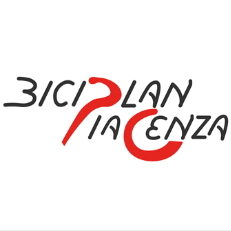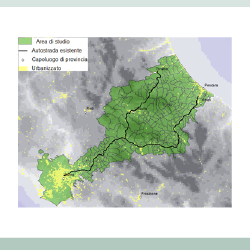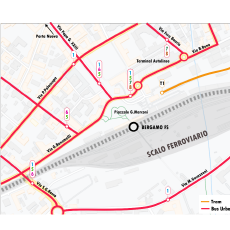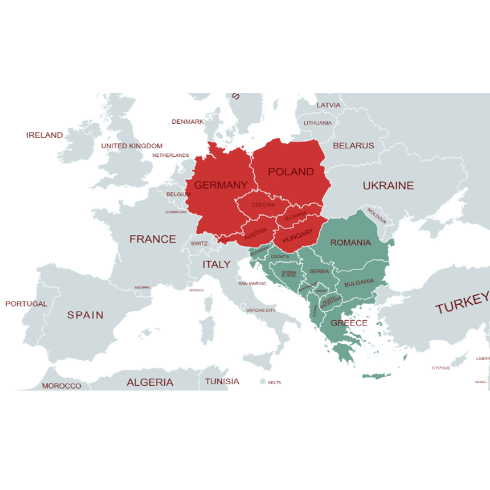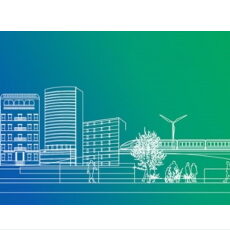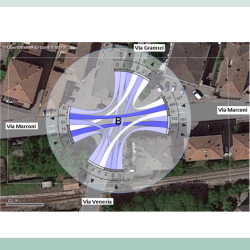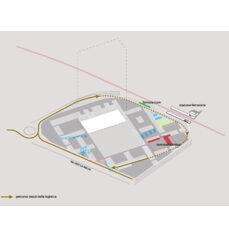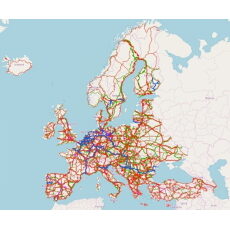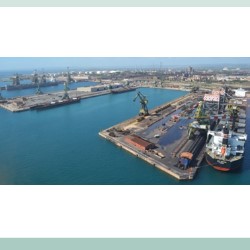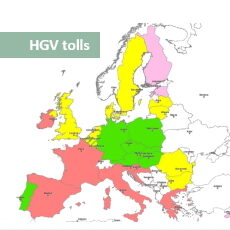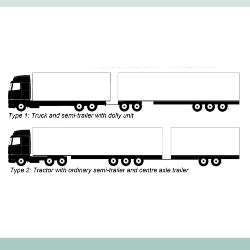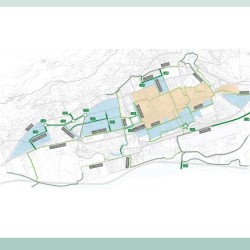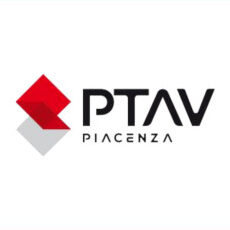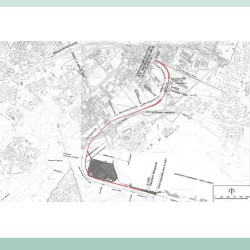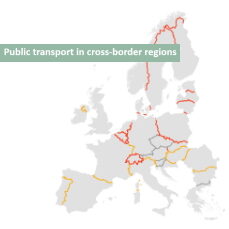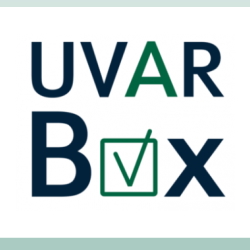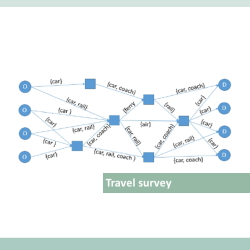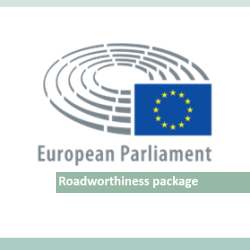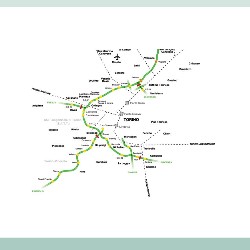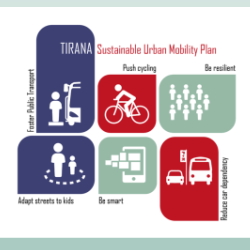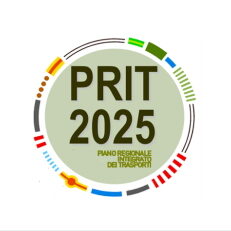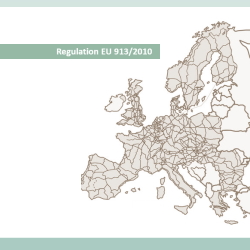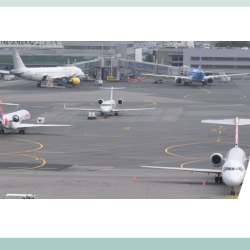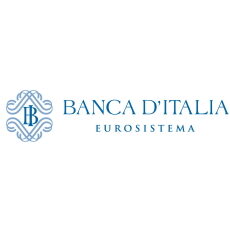- Drafting of the Biciplan, an strategic vision for cycling mobility in the city of Piacenza as part of wider mobility system introduced by the Sustainable Urban Mobility Plan (SUMP) In 2018 the Municipality of Piacenza started the process of reviewing and updating its mobility planning tools. After having elaborated the Sustainable Urban Mobility Plan and the Urban Traffic Plan, the Municipality has entrusted TRT with the drafting of the new Biciplan, that represents a deepening of the strategic vision for cycling already introduced in the approved SUMP. The Biciplan assigns a primary role to cycling with the aim to satisfy the mobility needs not only related to leisure but also (and especially) to the everyday commuting. The compact urban form of Piacenza with its orographic and climatic conditions plays in favour of a greater diffusion of cycling. Indeed 22% of residents already regularly cycle to work. The drafting of the Biciplan, started in April 2021, consists of the following activities Analysis of the local cycling mobility system and planning context with particular attention to the existing cycling network and related services, as well as the analyses of the cycling demand and road accident rates; definition of the methodology and the objectives for the prioritization of measures, also taking into account the limited resources; elaboration of the Plan proposal through the identification of policies and measures able to define the infrastructure, the services and the communication activities to encourage the use of bicycles as well as other aspects related to urban logistics and last mile deliveries. the quantification of economic resources necessary to implement all actions included in the plan and the definition of the monitoring system including indicators and targets . For more information The biciplan as a sector plan of the SUMP “Sustainable Mobility Planning in Piacenza, Italy”. Case study published by Eltis Platform
- Strada-dei-Parchi: Traffic study and cost benefit analysis of A24-A25 motorway The objective of the project was the traffic study, the cost-benefit and risk analysis of different of A24 and A25 motorways’ layout alternatives. The AIMSUN traffic simulation model was used to evaluate the impacts of the different route design variants, with special focus on travel times and accessibility. The Cost-Benefit Analysis of the alternative scenarios was combined with the sensitivity analysis of the main variables (e.g. investment costs, maintenance, etc.) and the risk analysis to evaluate the effects of uncertain variables (eg traffic demand, investment costs, incidence of weather conditions) represented with different probability distributions of occurrence. The Cost-benefit Analysis provided the economic indicators: Net Present Value – NPV and Economic Internal. Particular attention was paid to the assessment of the weather conditions impact on traffic and travel times in the various design alternatives.
- Preliminary study for the definition of development scenarios for the intermodal hub of the Porta Sud area, near the Bergamo rail station ATB Mobilità SpA assigned to the temporary association of enterprises formed by TRT Trasporti e Territorio and Policreo Società di Progettazione the contract for a study aimed at analysing the prospective structure of terminals, services, and technologies supporting the development of the intermodal hub to be build in Bergamo Porta Sud area, near the railway station. Activities included: A transport analysis, with the aim of obtaining a solid reference framework on the traffic flows (travellers and vehicles) that use and will use the intermodal hub. The evaluation of transport and environmental variables, through the application of a traffic model, allows to outline specific design considerations with the aim of guiding the development scenarios of the area. A review and analysis of international case studies relating to integrated mobility hubs, with the objective of identifying the design criteria to be followed in the design phase of the future intermodal hub in Bergamo. The development of proposals regarding scenarios that may be envisaged in the intermodal hub, with specific reference to connections and movements within the area (i.e., seamless transfers between transport terminals – urban and non-urban buses, tramways, trains, shared mobility facilities, etc.). The design of transport and architectural layouts related to the urban terminal of the existing T1 and the planned T2 tram lines, as well as of the new suburban, regional and long-distance bus terminal.
- Design and technical assistance for the implementation and tendering of a seasonal public transport service in the Municipality of Melendugno (Lecce, Italy) TRT Trasporti e Territorio Srl was commissioned by the Municipality of Melendugno to support the definition of a public transport service to be provided in the summer months connecting all the coastal marinas in its territory (Torre Specchia, San Foca, Roca Vecchia, Torre dell’Orso and Torre Sant’Andrea), as well as between the more inland areas (the town centre and the hamlet of Borgane) and the coast. The activities concerned in particular the revision of the existing daily service based on the “Mare in Bus” and “Terra-Mare in Bus” lines, as well as the preparation of the tender documents for the assignment of the service. The new service was tailored to the needs expressed in previous seasons, which in particular required an increase in the capacity of the vehicles used and faster journey times. The design of the new service included a review and verification of the stops, the inclusion of new stops and the definition of the routes and the operating schedule for both local lines. The timetables were integrated with those of the extra-urban buses connecting Otranto and Lecce. The service was successfully tested during the 2021 tourist season in order to calibrate the final bidding scheme and prepare for the subsequent multi-year tender. TRT also provided indications regarding the area’s overall mobility system, verifying the offer of parking in dedicated parking areas, on-street parking, the provision of pedestrian areas and limited traffic zones and, in particular, the impact on traffic and public transport services of the new coastal cycle/pedestrian path planned by the Municipal Administration. For more information visit visitmelendugno.com
- Definition of a strategy to exploit the potential of Greece as a gateway for logistics flows to and from Central The objective of this study is to support the Government of Greece in developing a Logistics Gateway Strategy and the related Implementation Plan to consolidate the role of Greece as maritime transhipment hub serving the international containerised traffic within the Mediterranean Sea and to pursue a transition from transhipment hub to a regional logistics gateway. The study approach is to assess and contextualize the opportunity to better position Greece’s logistics sector in order for Greece to become a more capable, more competitive and more attractive gateway linking Central Europe with international and intercontinental markets. To support the positioning of Greece, especially the port of Piraeus and Thessaloniki, the analysis develops the following steps: Quantitative mapping of the Central European Hinterland trades with a focus on south-east Asia (China) in order to understand the amount of freight traffic and the routes followed. This includes the intercontinental railway route across Asia between Europe and China. Operational mapping of the freight trades by involving relevant stakeholders (freight forwarders, intermodal operators, big retailers, etc.) mainlybased in Central Europe. The analysis provides a review of: maritime ports in Greece (Thessaloníki and Piraeus) and in Europe (Hamburg, Gdansk, Rotterdam, etc.), serving the Central European Market, freight corridors serving the Central European Market: the Pan European Corridor X and the Orient/East-Med TEN-T Corridor. In this study, TRT lead an international consortium of companies based in Greece (OPTILOG) and Austria (MC Mobility Consultants) to better cover the geographical scope of the study and with the partnership of MDST Transmodal as transport modeler expert in the container cargo shipping.
- Study on costs and benefits of the sustainable urban mobility transition The study had the objective to assess the impacts of different sustainable urban mobility transition scenarios, producing a quantitative analysis of their costs and benefits for European cities by 2030 and 2050. The calculation is based on an improvement and extension of the MOMOS model, which allows to calculate the costs and benefits of the transition through a set of indicators. To take into account differences among 779 European cities, the quantification of results has been applied to 12 city prototypes, which considered different dimensions (small, medium, and large cities) and geographic areas (southern, central/western, northern, and eastern Europe). The project considered three potential scenarios, based on a combination of policy measures taken from key EU initiatives: Promote and regulate, based on changing behaviour and promotion; Plan and build, focused on investments in technology and infrastructure; Mixed, which combines policies from the previous two scenarios. The three scenarios were built on specific combinations and applications of policy measures, belonging to six different policy groups: Shared Mobility and Demand Management; Innovative Services; Green Public Transport and Logistics Fleets & Charging Infrastructure; Pricing Schemes; Transport Infrastructure; Traffic management and control. The outputs of the study consisted in a series of indicators from three domains: transport (modal split, car ownership), environment (CO2 emissions, fatalities), and economic (city costs, revenues, and externalities). Also, a policy effectiveness comparison determined the best policy measures, in terms of associated cost/revenues and CO2 reduction, according to different city sizes. For more information: Full results of the study can be explored with this interactive tool. The study’s Full Report can be downloaded here. Additional info can also be found on the EIT Urban Mobility website For more information: New contract Interactive tool to explore results of 2021 study 2021 study’s Full Report EIT Urban Mobility website on 2021 study
- New mobility patterns in European cities The objective of the study is to provide an extensive data collection covering the areas of passenger mobility, urban logistics, fleet composition, transport activity and traffic for the EU Member States. The project is composed of three tasks: An EU-wide survey covering all mobility, including both urban and non-urban parts, based on the methodology recommended by Eurostat with a specific focus on new ways of mobility in cities (shared mobility, active mobility and use of alternative fuelled vehicles and modes). The task includes a statistical meta-analysis of similar surveys done at EU and at national, major regional and local level to derive evolution over time of mobility patterns. A targeted survey on urban logistics in the major EU urban centres, addressed at businesses that provide delivery services for own account or for hire, to understand the composition and the mileage of the fleet, the characteristics of the vehicles, the corresponding activity, the fuel/energy consumption, the Origin-Destination characteristics of the supply chain and the carbon footprint resulting from their activities in cities. A complete and consistent dataset of fleet, activity and traffic data and relevant indicators on the economic, environmental and usage aspects of transport, for the period 2005-2018, covering all road, airborne, rail and waterborne passenger and freight transport. TRT led the systematic review of existing mobility surveys in Europe, analysed the results of the passenger mobility survey (Task A), supported the activities for the urban logistics survey (Task B), and developed the rail dataset (Task C).
- User-friendly information tool on urban and regional vehicle access regulation schemes II UVAR-Exchange is the European Parliament Preparatory Action 2 (EP PA 2) contracted by DG MOVE. The project, which links to and follows the EP PA 1 (the UVARBox project in which TRT is also involved), aims to enhance the experience of road users by improving the communication of information to drivers in the vicinity of UVARs, as well as to facilitate the city’s access to information, especially of foreign vehicles and drivers, for their seamless travel and the city’s enforcement of UVARs. The project developed recommendations and guidance for EU-wide harmonised physical signs for different UVARs (use of symbols and layout of main and additional panels plus indication on road marking) and for variable message signs (VMS). Their applicability has been discussed and demonstrated in different countries including the provision of information to the vehicle via Cooperative Intelligent Transport System (C-ITS) UVAR-adapted and harmonized messages. UVAR-Exchange also addressed the cross-border sharing of vehicle and driver information, which will on one hand, allow the automatic compliance check of foreign vehicles and drivers, reducing the need for pre-registration (and related fines). The work included intensive desk research and extensive engagement with experts and stakeholders at the local, regional, national and international level (including the UNECE working group on road sign and signage), through surveys, interviews and workshops. For more information: UVAR BOX project
- Feasability study of urban freight transport, sustainable access to Reggio-Emilia historic centre The feasibility study of urban freight transport (UFT) sustainable access to Reggio-Emilia historic centre is a project contracted by Reggio Emilia Municipality. The project is underpinned by the results of the RESOLVE initiative (funded by Horizon 2020) that in the last three years, together with local administration surveys, has monitored average city centre accesses of both retailers and logistic operators. The study aims to understand the feasibility of urban consolidation centres (UCC) or micro consolidation centres (MCC) to favour last-mile sustainable operations throughout cargo bikes. This is gained by gathering a detailed level of information concerning local user necessities via online surveys and focus groups. Also, the analysis intends to evaluate the quality of infrastructure considering its compatibility with cargo bikes needs. Reggio-Emilia cyclelogistics feasibility study partly relies on local retailers and logistic operators who will be invited to join the Cyclelogistics Partnership. The joint venture is meant to define daily operative requirements as well as to form a permanent group of initiative forerunners and users. Such requirements will determine the characteristics of the consolidation centres in terms of dedicated structure (permanent, semi-permanent, temporary) and type of furniture/spaces that must consider the services offered and freights categories. The operative scheme would consist of the intermodal last-mile distribution obtained by the transhipment of parcels from heavier vehicles towards cargo bikes. Such a scheme would prevent or reduce the access of little optimised vehicles as well as polluting, harmful and space-consuming ones in the historic centre. Therefore, offering improved city centre attractivity without harming local supply needs, rather optimizing vehicles according to given spaces and offering more sustainable albeit efficient logistics operations.
- Analysis of ITS applications and solutions at logistics nodes Ursa Major neo project is co-financed by the Connecting Europe Facility of the European Union. The main goal of UMneo is to identify the best ITS solutions to interconnect the logistic nodes (ports and freight villages) and arches (road networks) for sharing each other information about traffic conditions or allow operators to book in advance some specific services. ITS (Intelligent Transport Systems) are known to be effective for several applications in the entire supply chain, e.g. for reducing congestions at gate terminals or along the road, for saving time and costs, for reducing the environmental footprint of logistics activities, etc. The Italian partners involved in UMneo are the ports of La Spezia, Livorno, Ravenna, Trieste, Venezia, the freight village of Verona and the road network operators ANAS S.p.A, Autovie Venete S.p.A., Autobrennero S.p.A. and Autostrade per l’Italia S.p.A. TRT was commissioned by RAM to describe the state of the art about ITS services and systems applied or planned in ports and freight villages infrastructures involved in the Ursa Major Neo project, pointing out the most relevant best practices. Final results come both from desk-analysis and specific interviews that TRT performed with the involved partners. For more information: Ursa Major Neo project Objectives of the Ursa Major project on NeoAutobrennero S.p.A. website
- SLOWMOVE – A study on the development of e-mobility in the waterway between Locarno and Milan TRT, together with Ambiente Italia, was entitled by Novara Province to develop a study within the INTERREG project «SLOWMOVE Ponti d’acqua verso il futuro. Lo sviluppo del trasporto lungo il Lago Maggiore, il Ticino ed il sistema dei canali secondo una prospettiva di rispetto ambientale e di incremento del turismo green» (SLOWMOVE Water bridges towards future. Development of the territory along Maggiore lake, Ticino river and canals in a perspective of environmental protection and development of green tourism). The first phase of this study was focusing on supply of charging stations and other electrified modes of transport. Moreover, it provided an overview of the area by linking together demographic data, tourist attractions, tourism statistics, etc. Furthermore, a legislative analysis was included for both Italy and Switzerland, regarding inner water navigation, e-mobility and its charging standards together with an overview of planning documentation. The second phase consisted in the formulation of three different scenarios (high, medium and low) that tried to foresee the development of the charging station infrastructure. Those scenarios were evaluated by local stakeholders with a participative process. Eventually, a third phase included an economical and an environmental impact of the identified scenarios. The first one evaluated the investment cost for every scenario and the demand characteristics. The second compared environmental performances of traditional and electric mobility and it estimated emission reduction. For more information (available only in italian) Press release about Slowmove workshop “La vocazione del territorio di Slowmove per la mobilità sostenibile lungo l’idrovia. L’indotto economico legato alla fruizione turistica e allo sviluppo del settore” (The vocation of the Slowmove area for sustainable mobility along the waterway. The economic impact of tourism and its development) YouTube video of Slowmove workshop “La vocazione del territorio di Slowmove per la mobilità sostenibile lungo l’idrovia. L’indotto economico legato alla fruizione turistica e allo sviluppo del settore” (The vocation of the Slowmove area for sustainable mobility along the waterway. The economic impact of tourism and its development) The report published on Novara Province website The program of the conference “Waterway & Mobility State of the Art, Results and Perspectives” (“Idrovia&Mobilità Stato dell’arte, risultati e prospettive”) and its presentations (in italian) The program of the conference “A lighthouse on the waterway” (“Un faro sull’idrovia” in italian) and the video of the first part of the event, during which TRT presented its cotribution (in italian).
- Sustainable Urban Mobility Plan (SUMP) of Ravenna (Italy) and sectorial mobility plans As a result of a tendering procedure, TRT Trasporti e Territorio, in association with META Mobilità Economia Territorio Ambiente and ITL Istituto sui Trasporti e la Logistica, has been selected by the City of Ravenna to prepare their Sustainable Urban Mobility Plan (SUMP) and the related sectorial mobility plans. Team’s activity is focussed on the preparation of the following documents, among other: Sustainable Urban Mobility Plan, which is articulated in several methodological steps related to: 1) monitoring and assessment of the current SUMP’s results; 2) background analysis of the mobility-related framework and its environmental, social and economic impact in Ravenna; 3) identification of the strategies for the construction of the SUMP scenarios; 4) design of detailed alternative scenarios for the SUMP; 5) evaluation procedure, implementing a ex ante transport model (VISUM). The environmental sustainability of the SUMP is verified through the application of the SEA procedure. Public Transport Plan, coherently developed with the SUMP, which includes a technical and economic feasibility study for the implementation of a low- or zero-emissions public transport system. General Urban Traffic Plan, prepared from objectives, strategies and measures previously defined in the selected short-term scenario of the SUMP. Urban Parking Plan, Functional Classification of the Road Network, Electric Mobility Plan, Road Safety Plan, Cycling Mobility Plan, Strategic document on urban logistics. The drafting of the Plans makes use of innovative methods for the quantification of Ravenna’s transport demand (for example, using data derived from the analysis of the cellular network), which are flanked by more traditional site surveys (vehicle counts, origin-destination surveys, counts on PT lines and at stops, etc.). Finally, all phases are accompanied by a vast communication and participation campaign, which sees the involvement of citizens and stakeholders through public meetings and online questionnaires.
- Application of a microsimulation model to evaluate different hypotheses for the reconfiguration of some road junctions in the municipality of Sorbolo The transport study considers different design alternatives to resolve critical issues concerning the Provincial road 62R in Sorbolo Mezzani, a small municipality in the Province of Parma. The transport study was conducted through the construction and application of a traffic microsimulation model using PTV Vissim software. The aim of the project was to evaluate, in transport terms, the different hypotheses for the reconfiguration of the nodes in the small municipality. The simulations were carried out wit respect to both morning and evening pick hours. The following activities were carried out: Acquisition of demand data and realization of traffic surveys in the concerned intersections; Construction and calibration of a microsimulation model of the current status; Implementation and modelling analysis of design alternatives and evaluation of transport impacts (in terms of average and maximum queue lengths, delay in crossing the node and LoS – Level of Service) identification of the optimal design configuration.
- Design competition for the new business centre of the Sicilian Region In 2019, the Regional Sicilian Government launched a public contest for the design of its new headquarter with the idea of centralizing its different administrative functions and investee companies that are currently distributed in different locations throughout the city. The aim of the intervention is to create a hub that would reduce functional difficulties and ensure greater efficiency in the services provided to citizens and municipal administrations. This would also help cutting unnecessary trips and considerably reduce impacts in traffic and pollution. TRT Ingegneria participated to the contest with the role of mobility expert, together with a wider consortium composed by MJW Structures (Italy), MATE Engineering (Italy) and led by Xaveer De Geyter Architects (Belgium). TRT Ingegneria had the role of organising the public and private mobility system by defining the circulation scheme, the parking system, and the intramodality with the “Ugo La Malfa” railway station of the Palermo bypass. The proposal ranked among the top five over 30 participants during the first phase of the public contest, thus gaining access to the second phase of the competition.
- Impact assessment for the revision of regulation (eu) n° 1315/2013 on union guide-lines for the development of the trans-european transport network The European Union with the Green Deal (proposal EC COM(2019) 640 final) has agreed to implement the Paris Climate Agreement leading the EU towards climate neutrality in 2050. In a more detailed communication in 2020 the European Commission proposed to step-up the climate policy ambition for 2030 and reduce GHG emissions of the EU by 55% compared to 1990 (EC COM(2020) 562). For the transport sector the EC published a new smart and sustainable mobility strategy in December 2020 (EC COM(2020) 789) presenting the strategic policy framework that would deliver the GHG reductions required by the transport sector for 2030 and until 2050. As part of this highly dynamic policy framework the EC has foreseen the revision of several existing transport regulations. The revision of the TEN-T guidelines is one of the major transport related policies besides the revision of the Alternative Fuels Infrastructure and the Intelligent Transport System directives and the planned revision of the Rail Freight Corridors regulation. This study carries out the analysis accompanying the impact assessment for the revision of Regulation (EU) N° 1315/2013 on Union Guidelines for the development of the trans-European transport network. Supported by two European scale modelling tools ASTRA and TRUST, the study provides the assessment of three alternative policy options in terms of their transport, economic, social and environmental impacts and identifies the most promising one. The report is available on the website of the “Publications Office of the European Union” at this link.
- Analysis of docks’ capacity in concession to Arcelor Mittal Spa in the port of Taranto TRT has been contracted to carry out an assessment of the actual capacity of the docks taking into account the current production level of the steel plant. The need for the analysis was expressed by the AdSP Management Committee in agreement with the local authorities. Due to the significant reduction that affected the plant’s production capacity in recent years with the main consequence of the inevitable decline in port traffic, the analysis was conducted with the main objective of responding to the need for rationalization and efficiency of the logistics and port infrastructure organization. During the study, statistical data and potential future scenarios for the relaunch of the plant were considered, highlighting the existing oversizing of the docks intended for raw materials and products handling, with respect to the actual operational needs. At the end of the analysis, strategies to promote the efficient use of the docks and the functional and environmental progress of the freight handling have been included. The need for solutions with reduced environmental impact, in line with the requirements and expected performance, was also stressed.
- Technical Assistance to Develop a Business Model to Finance and Scale-up E-Mobility in Uruguay Uruguay has an emerging electric vehicle sector, with good growth prospects and a strong policy agenda on fleet electrification. The country has committed to several mitigation measures in the transport sector, such as the introduction of electric vehicles in public transport, of utility electric vehicles and the installation of the first electrical route of Latin America connecting Colonia-Montevideo-Chui. The main objective of this project is to provide a policy and regulatory guide for a smooth transition to e-mobility in Uruguay and help the country to achieve an efficient and sustainable transport decarbonisation, through: Diagnosis of the current infrastructure and regulatory situation of e-mobility; Assessment of the several pilot projects already developed; Identification of desired business models and financing scheme for e-buses and private EVs; Propose a policy and regulatory guide to achieve overall e-mobility expansion targets in a time-line consistent with Uruguayan Nationally Determined Contributions (NDCs) to the Paris Agreement objectives; Propose a consistent and sustainable body of fiscal incentives and subsidies to favour and promote the previous e-mobility targets. The project is carried out by an international consortium led by MRC Consultants and Transaction Advisers (ES) and composed by TRT (IT) and SEG Ingeniería (UY). TRT is specifically involved in the project component related to private e-mobility, as well as in the fiscal impact assessment to proposed measures and policies. The project will provide a set of outputs including: E-bus financing alternative sschemes with estimated cost impact, timeframe, and impact on rolling stock; Assessment of long-term fiscal impact and ways to ensure efficiency and sustainability of alternative schemes; Regulatory and fiscal incentive schemes to sustainably increase use of private e-vehicles; Long-term fiscal impact analysis of incentives and tax revenues from foregone taxes, and elaborate recommendations; Two public workshops and related materials available for knowledge sharing.
- Assessment of infrastructure costs calculation, tolls calculation and variation for heavy goods vehicles in Member States Directive 1999/62/EC and following amendments provide the legal framework for the application of toll charges to heavy vehicles in the EU, stipulating that road infrastructure charging shall be based on the recovery of infrastructure costs and of traffic-related externalities. Before implementing or amending tolling arrangements, Member States must provide the Commission with a detailed description of the new system. As contractor of the FWC, TRT verifies whether the tolling arrangement notified to the Commission fully respects the provisions of the Directive. The methodology applied for the assessment includes: determination of the scope of the tolling scheme notified by the Member State; identification of costs eligible to be recovered through tolls; allocation of infrastructure costs across vehicles categories; calculation of the weighted average tolls and cost recovery rate. In its assessment reports, TRT provides sound and evidence‐based analyses of the methodology used for infrastructure costs calculation, assessment of compliancy with the Directive’s core principles, as well as recommendations for possible modifications and improvements. Thus far TRT has assessed nine cases, including tolling arrangements from Italy, Spain, France, Bulgaria, Poland and Hungary.
- Study on the implementation of the amendments to Directive 96/53/EC amended by Directive 719/2015 (implementation of vehicle weight and dimension Directive) Directive 96/53/EC regulates the maximum authorised dimensions in national and international traffic and the maximum authorised weights in international traffic, both of passenger and freight vehicles. The evolving market, technological development and new international emission targets has required a review od the Directive in 2015 by Directive (EU) 719/2015. The amendments introduced concern: the installation of retractable or foldable aerodynamic devices to the rear of the vehicles; alternatively fueled vehicles to increase the maximum weight; the use of aerodynamic cabs with safer profiles; the increase in weight for passenger buses; the carriage of 45-feet containers and 45-feet swap bodies as part of intermodal transport operations. The objective of this study is to provide input to the Commission report, on the implementation of the amendments to Directive (EU) 2015/719 taking into account the specific characteristics of certain market segments. Five segments has been investigated by TRT in partnership with COWI: Hight Capacity Vehicles (HCV); Car carrier vehicles; Vehicles with equipment (crane, lift etc.); Vehicle for the transport of indivisible loads; Transport of military equipment.
- Update of the General Urban Traffic Plan (PGTU) of Aosta The study concerned the update of the Aosta General Urban Traffic Plan (PGTU) already prepared by TRT Trasporti e Territorio about 10 years ago as part of the Metis Consortium. The city of Aosta (about 35,000 inhabitants) concentrates one fourth of the Aosta Valley regional population and plays an important role in regional mobility thanks to its services and economic activities. The activity was launched in November 2019 and it consisted of the following activities: the update of the key mobility factors – demographic and socio-economic structure, transport networks and services supply, mobility demand, environmental and social impacts; the analysis of the on-going planning tools, including an assessment of the state of implementation of the measures included in the previous PGTU (2011); the identification of the urban mobility system’s strengths and weaknesses in order to define the set of strategies and interventions to be included in the new PGTU; the design of the Reference and the Planning scenarios with measures related to: road network and its regulation, public transport system, cycling network, parking system, mobility management, electric mobility, urban logistics and ITS systems; the definition of detailed interventions for specific locations – the Arch of Augustus area, the new university complex area, the railway station area – both from urban planning and from mobility system points of view. The PGTU was approved by the Municipality Council on February 23rd, 2022, with official act no. 23.
- Technical support in the drafting of the Territorial Plan of the Province of Piacenza (Piano Territoriale di Area Vasta) TRT has been commissioned by the Province of Piacenza to provide technical support in the drafting of the Territorial Plan of the Province (PTAV) in line with the new Regional Planning Law No. 24/2017. Project activities included the definition and evaluation of alternative mobility and transport scenarios within the time frame of the Territorial Plan of Piacenza Province. In this context, the main tasks concerned: the update of the knowledge framework of the mobility and transport system in the Province of Piacenza; the development of a reference scenario and two alternative evolving scenarios. The first, tendential, includes interventions planned and not implemented by the current Territorial Plan (PTCP). The second scenario is based on a selection of interventions and measures that respond to the ASI (Avoid, Shift, Improve) strategy, including measures to manage mobility demand and in favour of alternative modes to motorized private vehicles; the evaluation of alternative scenarios, both from a transport and environmental perspective, was also carried out with the support of the traffic simulation model at the 2032 horizon; the provision of technical support to the Public Administration in the interaction with the stakeholders; the providing of technical contribution in the drafting of intermediate and final reports. The final document includes four preliminary modelling tests to identify the best route alternative for the so-called “median road“ of the province.. A further test concerned the complex interconnection system between motorways A21, A1 and State Road SS9. The intervention includes: a new connection between the Rottofreno tollgate on the A21 and the Basso Lodigiano tollgate on the A1, the downgrading of the Piacenza section of the A21, a new bridge over the Po river as a variant to the SS9. The evaluation of these alternatives included transport, environmental and territorial aspects, also thanks to the support of Politecnica. For more information visit the official website – Only available in italian
- City of Bergamo – New railway station in the strategic urban context of the new exhibition center As part of the transformation area “Fiera Nuova-Boccaleone Park” – At_e / s29 – UMI 2, to be implemented in the strategic urban context of the “New Exhibition Center” of the Municipality of Bergamo, TRT has provided transport consultancy specialized for the feasibility study for the construction of a railway station along the new Bergamo – Airport railway line. TRT led the study alongside a team of railway design experts (GVG Engineering) in the development in the development of the plans, profiles and railway sections for the new railway station. The new station will be located in an intermediate position, on the edge of the Bergamo Exhibition Center, ensuring a direct connection from the city station and the Bergamo Orio al Serio Airport. The station will be in a viaduct, ensuring the east-west permeability of both the road network and the cycle-pedestrian connections as well as providing a new interchange parking hub serving the airport the urban area and the exhibition center.
- New Hospital of Piacenza: Contributed to the feasibility study through an in-depth transport system analysis and a Cost-Benefit Analysis TRT Trasporti e Territorio was commissioned by the Local Health Unit of Piacenza to provide technical support for the project of the New Hospital of Piacenza, as part of a consortium led by Policreo Srl. TRT contributed to the feasibility study through an in-depth transport system analysis and a Cost-Benefit Analysis. The activities were divided into three main topics: the first topic concerned the mobility system of the current hospital complex, analysing in detail the road system, the public and private accessibility of the area and the hospital parking area; the second theme assessed the functionality of the road and parking infrastructures serving the new hospital area and estimated the impacts on the private mobility system. The transport analyses concerned the private and public modes as well as cycling and the parking systems. The analysis was conducted through the application of a sophisticated and dynamic traffic micro-simulation tool that provided a series of quantitative parameters (average speed, delays, etc..) functional to assess vehicular flows; The third one was related to the cost-benefit analysis. The analysis was developed comparing the scenario with the new hospital with the scenario where the existing hospital is upgraded/renovated. The cost-benefit analysis estimated the project’s contribution to social welfare, comparing the socio-economic costs of the two scenarios (investment, maintenance, etc.) with the corresponding benefits (health benefits, improved transport accessibility, availability of recreational and green spaces).
- Implementing a multimodal transport network model of the Rail Baltica Corridor and appraisal of the passenger and freight transport activity onto the Corridor Rail Baltica Global Project is the Baltic part of a rail transport infrastructure project with a goal to integrate the Baltic States in the European rail network. The expected core outcome is a fully interoperable railway line of more than 870 km in length meant for both passenger and freight transport as part of TEN-T Core Network (North Sea – Baltic Corridor). A first phase of the study, carried out in 2021-22 consisted of two main activities. The first activity was the implementation of a multimodal transport network model of the Rail Baltica Corridor covering in some detail (NUTS3 or even sub-NUTS3 zones) the area of the three Baltic countries (Estonia, Latvia, Lithuania) and of neighbouring regions of Finland and Poland plus the rest of Europe and world regions in a progressively more aggregated fashion. The transport model is a four-stage model, dealing with the estimation of generated demand, distribution, mode split and assignment to a multimodal network. The model covers both passenger and freight activity of interest for the planned rail infrastructure. All transport modes competing with rail are represented. Different rail services are explicitly modelled both for passenger (including Night-Train services) and for freight. Supporting the implementation of the model, a Stated Preference surveys was carried out to estimate parameters for the passenger demand model. The second activity of the first part of the study was the application of the model to estimate the passenger and freight demand onto the corridor in several future time thresholds, corresponding to different stages of the implementation of the infrastructure, and under three scenarios: a “do-nothing” scenario without the new infrastructure. a “Base scenario” with the new infrastructure. an alternative scenarios where alternative assumptions are made regarding intermodal rail transport services and the application of measures related to the EC Green Deal transport policy is considered. The application of the model provided several outputs ranging from aggregated statistics to link-based traffic and including impact indicators on energy consumption and emissions. The model was delivered along with the outcomes of the study and a training course focused on the use of the model was held for staff of Rail Baltica AS. This first phase of study was carried out by TRT with the support of PTV (DE), MDS Transmodal (UK), CSE COE (LV). TRT was the coordinator of the study and was responsible for developing the demand model (passenger and freight) as well as the Stated Preference survey. In a second phase (2024), some aspects of the model have been revised in order to improve the level of detail of the analysis and make the interaction with the model easier. In particular, the number of zones has been increased so that zones do not include more than one (non-urban) regional station. Following the revisions implemented, at the end of the second phase the model is recalibrated. The activities of […]
- Study on “Providing public transport in cross-border regions. Mapping of existing services and related legal obstacles” In the EU it is widely acknowledged that border and cross-border regions need particular attention. About 30% of the EU population live in regions close to internal border. Despite the single market, cross-border activities still face bottlenecks hampering businesses and citizens. Cross-border transport is one central means to facilitate cross-border activities. Despite the importance of cross-border public transport to link regions across borders, to date, no European-wide and comprehensive inventory of cross-border public transport (CBPT) services exists. Thus, even the actual number of services is impossible to estimate. In view of this role of CBPT, this study: provides a comprehensive inventory of existing CBPT services along the internal borders of the European Economic Area and a sound and profound analysis thereof; develops an inventory of obstacles to the implementation of CBPT and further analyse them and possible solutions; identifies best practices with relevant case studies and develop a toolbox to support planners and implementers. Within the project TRT is responsible for: the analysis of cross-border rail transport services; the development of a web viewer to map existing services for all transport modes; the analysis of 3 case studies on the business models of cross-border public transport services.
- User-friendly information tool on urban and regional vehicle access regulation schemes UVAR-BOX is the EU project which has been established to tackle fragmented or unavailable information on up-to-date and relevant UVARs (Urban Vehicle Access Regulations) policies in European cities. The 24-month project successfully ended in 2023 and developed the Datex II standard for UVARs and a tool, the UVAR-BOX, to facilitate the input of UVAR data into the Datex II standard, which can be read automatically by navigation systems and mobile applications available to European drivers. UVAR policies pursue various objectives such as improving air quality, livability and reducing congestion. The project aimed to harmonize and disseminate information on UVAR policies in fleet management tools and navigation devices. Its widespread application and use will support both road users to plan journeys across the EU, and local authorities and Member States to set up standardized communication procedures in line with European regulations on the dissemination of mobility-related information (ITS directive and single digital gateway). TRT, as part of a large consortium, had the role of Italian Country Coach to support Italian public administrations in this digitization process. For more information Project brochure – Link Country Coaches web page – Website DATEX II: the standard for traffic and mobility information – Video
- A survey in 20 European cities on behalf of the JRC of the European Commission to explore the impacts of COVID-19 outbreak on urban transport The Covid-19 crisis triggered major changes in users’ mobility preferences in light of health risks and restrictions, as well as changes in terms of different working patterns and economic activity that have impacted on the demand of urban mobility. The study was aimed at collecting data through a survey in 20 EU cities, in order to understand individuals’ urban mobility patterns in light of the changes introduced by the Covid-19 pandemic. In specific, the exercise analysed how the health crisis impacted on elements like: mode choice, transport costs, trip purposes, frequency of movements, external factors driving the transport choice. The impact of disruptive elements, such as teleworking was also explored. TRT was responsible for the research, which was managed by IPSOS. The 20 cities were distributed in 11 EU countries; they included large metropolitan areas as well as medium cities with different levels of diffusion of the Covid-19 virus, different role of public transport and bike and different level of road congestion. The survey involved 500 individuals in each city. Two different methodologies were used to collect responses: a CAWI questionnaire and a CATI questionnaire. The combination of the two methods ensured an affordable and representative sample.
- Technical assistance for study and research activities of the Interreg Project «SUBNODES» The project SUBNODES (Connecting the hinterland via Sub-nodes to the TEN-T core network) is funded by the Interreg programme Central Europe, which targets at enhancing the links of the hinterland with the main hubs of the TEN-T through regional centres, the so-called «SUBNODES». The aim of the technical assistance is support the preparation of the Action Plan of the Lombardy Region to improve the connections of SUBNODE cities of Brescia, Bergamo, Varese and Como with the airports of Malpensa, Linate and Orio al Serio, core nodes of the TEN-T in Lombardy. The technical assistance activity to deliver the Action Plan consists of four phases: Analysis of the current situation of the transport network and of the links of the subnodes with their catchment area and towards the main nodes of the TEN-T. The analysis delineate the baseline to identify new measures and actions Elaboration of a SWOT analysis Identifications of solutions to specific problems to improve passengers transport services Recommendations for actions development The technical assistance also supports stakeholders consultation and the presentation of the Action Plan in two publications.
- Roadworthiness package: Legal transposition, concrete functioning and readiness for the future The roadworthiness package was adopted in 2014 and is composed of three directives, focused respectively on periodic roadworthiness tests (Directive 2014/45/EU); vehicle registration documents (Directive 2014/46/EU); and technical roadside inspections of commercial vehicles (Directive 2014/47/EU). The objectives of this research paper are: to check how Member States have transposed the package from the road safety perspective and to determine whether the transposition has effectively led to the application of common standards; to check whether the national measures transposing the safety provisions of the package are sufficient and adequately shaped to achieve its safety objectives; The analysis of the legal transposition by Member States was performed by considering the national legal measures transposing the roadworthiness package as they had been notified to the EC (more than 450 documents from 27 Member States) Direct survey among responsible authorities at national level involved 23 different organization from 21 MS completed by 7 direct interview to ministries and other national authorities. TRT had lead a multidisciplinary international consortium made by OIR, Arcadia International and M&E Factory, further supported by CORTE Road transport is the most common means of transport in the EU, as well as the most important cause of accidents. In this respect, the European Union has developed a transport policy oriented towards safety and security through common standards and rules. A roadworthiness package was adopted at European level in 2014, aimed at improving road safety through common rules on periodic roadworthiness tests for motor vehicles and their trailers (Directive 2014/45/EU), vehicle registration documents (Directive 2014/46/EU), and roadside inspections of commercial vehicles (Directive 2014/47/EU). The purpose of this European implementation assessment is to check whether the transposition of safety measures included in the package has led to common standards in practice, as well as to assess the current functioning of the exchange of information and the mutual recognition of technical controls between Member States. For more information Implementation of the roadworthiness package: European implementation assessment, the study carried out by TRT. Go to the European Parliament website
- Assistance for the highways A21 – A5/SATT concession tender The project had the objective of verifying how the proposal for a new tolling system, along the highwat sections subject to the concession tender, was such as to ensure the protection of consumer rights, encourage the economic growth of the territory, and be oriented towards environmental protection. The object of the concession tender includes the highway sections SATAP A21 and ATIVA A5/SATT (Turin Ring Road Highway System). TRT’s work focused on a series of elements and consequent impact assessments related to the introduction of an innovative tolling system involving the SATT network (currently an open freeway system) and also partially involving the A5 and A21 highways. The elements of the new tolling system considered were: Implementation of a “free flow” system to replace the current open system with barriers User information system Choice of payment method and service provider Agreements with local realities to promote territory development Redevelopment of barriers Development of service areas
- The first Sustainable Urban Mobility Plan for the capital city of Tirana, Albania The study is part of a larger initiative called SUMSEEC II (Energy-efficient Urban Mobility in South-eastern European Countries), funded by the German Ministry for Economic Cooperation and implemented by GIZ. TRT supported the Municipality of Tirana in the development of their first SUMP, according to the latest European guidelines. The process started in October 2019, and was finalized in July 2020. The planning process pursued a strong collaboration with the different city departments and local stakeholders. Four large workshop were organized at relevant milestones, to guarantee the participatory approach that characterize a SUMP. The first part of the process was aimed at building a comprehensive analysis of the current city status based on previous studies, evidences collected on the field, discussions and feedbacks gathered from the stakeholders in dedicated workshop and surveys held until January 2020. The second part, focused on the drafting of the planning document itself, was accompanied by series of online focus groups and questionnaires that guaranteed and facilitated the participative process despite the lockdown in Tirana during the COVID-19 pandemic outbreak in Spring 2020. The proposed planning scenario is the result of the assessment of three alternative options by means of a Multi-Criteria Analysis. It includes a set of coordinated measures structured in six key strategies identified as founding policy pillars that respond to Tirana’s mobility challenges. For more information “SUMP for the City of Tirana”. Case study published on Eltis Platform
- Drafting of Operational tools guidelines for the promotion of sustainable mobility measures. PRIT (Integrated Regional Transport Plan) guidelines update The support provided by TRT for the drafting of the Guidelines to boost sustainable innovative mobility in the urban areas is part of the definition of the new Integrated Regional Transport Plan (PRIT 2025) of the Emilia-Romagna Region. The objective of the guidelines prepared by the Regional Administration Territorial Planning Service is to provide support to local administrations in the their preparation of Sustainable Urban Mobility Plans (SUMP), specifically guiding them on matters like: The need of collecting quantitative and qualitative data in order to develop a framework to support the analysis the mobility demand trends and characteristics, also taking into account the pandemic crisis. The analysis of innovative tools and actions related to the concept of sustainable mobility planning. These include ITS tools, use of big data in the context of mobility forecast studies, dissemination and enhancement actions related to sharing mobility and self driving vehicles. The development of collective services more suitable for intercepting the real demand for mobility, such as on-demand transport services and Mobility as a Service models. The guidelines presented in June 2021 are accompanied by an evaluation structure (MOMOS Model) capable of recognizing the sustainability dimension of the covered actions. For more information: It is possible to download the technical fact-sheets on the Regional government website (only available in Italian) The Emilia-Romagna Region presented the results of the project in the conference “Planning transport: PRIT2025 and sustainable mobility” held on 10 November 2022 in the Aula Magna of the regional headquarters. The slides and the conference program are available here.
- Evaluation of Regulation (EU) No 913/2010 concerning a European rail network for competitive freight The evaluation support study covered all the provisions of the Regulation, all the European countries participating in a Rail Freight Corridor (RFC) and addressed the period from the establishment of the RFCs until 2020. The key overall challenge addressed by the Regulation is the need to improve the competitiveness of rail freight compared to other transport modes. The starting point of the Regulation is that the quality of the rail freight capacity provided by the infrastructure managers to the operators of international rail freight services needs to improve in order to make it happens. The study identified the impact of the Regulation by comparing the actual developments in the rail freight sector, i.e. with the Regulation in place, with respect to a baseline situation describing the likely developments that would have occurred without this policy intervention. The study also took into account the activities related to the RFCs going beyond the provisions of the Regulation, addressing for instance technical and operational interoperability along the RFCs. Furthermore, the study covered the activities of the rail sector undertaken in the period of analysis and contributing to the objectives of the Regulation. Practically, the study examined the relevance, effectiveness, efficiency, coherence and EU added value of the Regulation. The analysis was based on data collected from a range of primary and secondary sources and direct input from concerned stakeholders, collected using interviews and surveys with national authorities, the rail industry and the Commission’s open public consultation. The study has found that the Regulation has been implemented as far as the designation, the governance and the investment and management of the RFCs are concerned. The concerned stakeholders have fulfilled the provisions of the Regulation in a formal sense and within their actual scope. Viewed on its own, however, the Regulation has had a relatively limited impact in achieving the general, specific and operational objectives and has not led to a broad adoption of the tools, which have produced the intended effects only to a limited extent. TRT acted as leader of the study team built in partnership with M-Five (DE), MC-Vienna (AT) and TEPR (UK). TRT was responsible for (i) the design of the evaluation, (ii) the definition of an evaluation baseline, (iii) the analysis of the stakeholders consultation, (iv) the analysis of the effectiveness and efficiency of the Regulation and (v) the estimation of costs and benefits from the implementation. For more information Evaluation of EU regulation on TEN-T rail freight corridors, the study carried out by TRT. Go to the publication
- Evaluation of the White Paper ‘Roadmap to a single European transport area – towards a competitive and resource efficient transport system’ The 2011 Transport White Paper “Roadmap to a Single European Transport Area – Towards a competitive and resource efficient transport system” is the document with which the European Commission has outlined the strategy on the future EU transport system and which defines the political agenda for the next decades. The main objectives of the strategy are (i) reduce carbon dioxide emissions in transport to a level that is 60 % below that of 1990; (ii) reduce the transport sector’s dependence on oil; (iii) reduce congestion growth. The strategy is articulated through 40 action points and 132 initiatives aimed at achieving 10 operational targets at different time horizons (2030 and 2050). TRT, member of the consortium led by Ricardo NL and participated by M-Five, E3Modelling and TEPR is responsible for carrying out the mid-term evaluation of the effectiveness of the strategy in order to support the European Commission in identifying any proposals for revising the document. The purpose of the evaluation is to provide a robust evidence-based assessment of the White Paper and the actions following from it since its adoption in 2011. It examines the effectiveness, efficiency, coherence, relevance and EU added value of the White Paper in line with the Better Regulation Guidelines. The evaluation looks at the identified needs for transport policy, the objectives and goals set in the White Paper, the proposed initiatives, reached outcomes and their results, as well as the overall impact of the strategy since it was put in place. The results of the evaluation are intended to inform subsequent decisions of the Commission on possible priorities for the future agenda of EU transport policy. For more information Evaluation of the White Paper ‘Roadmap to a single European transport area – towards a competitive and resource efficient transport system’. Final report, March 2021
- Data gathering and analysis of the impacts of cabotage restrictions on combined transport road legs: support study for the evaluation of Regulation 2020/1055 (Mobility Package 1) Regulation 2020/1055 will allow Member States to apply the so-called cabotage restrictions to road legs of international combined transport operations if those road legs do not cross a border. The objective of the study was to provide the Commission with an analysis on the market impacts of the new restrictions. To that end, TRT conducted a survey among major combined transport organisers and terminal operators, covering all modal combinations and a wide range of Member States. The survey focused on the collection of data and information on combined transport road legs, and on the compliance strategies and impacts foreseen by the respondents. Based on the results of the survey, the study evaluated the quantitative impacts of cabotage restrictions on the European combined transport market, including estimates of the expected change in combined transport volumes, market share, modal shift and other transport activity indicators. According to the results, the rail-road segment would suffer more than the other modes considered (short sea shipping and inland navigation) mainly because of the tighter competition of the road only carriage. Relevance of the various compliance measures for CTOs (% of CT operations concerned by each measure) For more information Mobility Package 1 and impacts on combined transport sector, the study carried out by TRT. Go to the publication
- Nantes Debat Publique – Nantes Atlantique airport, traffic forecasts due diligence On January 2018, the French Prime Minister announced the decision to abandon the project for the construction of the new airport of Notre‐Dame‐des‐Landes and develop the existing Nantes‐Atlantique airport under the management of the Direction Générale de l’Aviation Civile (DGAC). The development of the Nantes‐Atlantic airport by 2040 was subject to prior consultation of the Commission Nationale du Débat Publique (CNDP), in order to inform in a transparent way the participants and discuss mobility needs, protection issues populations, environmental issues, socio‐economic impacts as well as territorial integration of the project. This consultation was envisaged to gather the opinions, stakeholder expectations and proposals for the development of the existing airport, and the options studied by the DGAC to meet needs in short (2025), medium (2030) and long (2040) terms. The objective of the analysis was to assess the solidity of the traffic forecast, taking into account the stakeholders’ opinions that evaluated the projections either underestimating the traffic potential or overestimating it due to taxation, stabilisation of the economic growth and climate change related regulations. The analysis of the traffic forecast was based on documents and studies related provided by the CNDP. Additional documentation was gathered in relation to air transport market development and transport demand projections at different geographical levels. The study identified the following factors as potentially influencing air traffic growth at the airport in the future. Operating airlines and networks. The penetration of low cost airlines in the air market of the region significantly supported the development of the airport traffic during the past. Relationship between airlines networks, travellers profile and socioeconomic context of the region. The network, especially for the international segment, is reflected by the profile of the travellers identified according to the surveys carried out. Competition with other French airports, although it was found low due the small size of the closest airport (Rennes) and negligible interaction with other comparable regional airports. Competition with high-speed trains and long-distance buses. The extensions of the TGV network might divert some air demand at 2030 (LGV Bretagne‐Pays de la Loire) and 2050 (Ligne nouvelle Ouest Bretagne Pays de la Loire). Policies for internalisation of external costs, because the French Government announced an environmental tax levied on airlines flying out of the country. The political scenario (i.e., Brexit) and macro‐economic (e.g., increase the oil price). The study found that the forecast of 2019 did not overestimate the development of the airport at 2030. At 2030‐2050, the growth seem less likely to happen, because the offer of connections could reach the saturation. For more information, please check Debat public website
- Airfreight transport in Italy, Cluster Cargo Aereo study The Cluster Cargo Aereo is a trade association of stakeholders operating in the air cargo market (forwarders, airlines, handlers). Its mission is to provide research, studies and statistics to promote an understanding of the sector and its challenges to relevant stakeholders. After its first study, released in 2019 and focusing on the supply of airfreight services (benchmarking of national and European airports competitiveness), the Cluster commissioned TRT a new study to better understand the airfreight demand and users preferences. TRT was committed to analyse the type of commodities and industrial sectors making the most use of airfreight services, identifying the factors that drive companies to modal and airport choice, including foreign terminals. The analysis was carried out through two main activities: a desk research, i.e. a statistical analysis of airfreight traffic flows (quantities/values) in the last 10 years and with respect to the most relevant types of commodities; a field research, namely a survey to a selection of relevant companies (export oriented manufacturers, freight forwarders, etc.) to gain insights on key research questions. With this study, TRT provided not only an up-to-date analysis of the national airfreight market, but also identified strategic actions for market development, particularly with respect to the sector-specific logistic needs coming from the survey. A particular focus was also devoted to Covid-19 emergency and to the related impacts on the airfreight sector. After the first study, presented in 2019 and focused on transport supply (competitiveness of national and European airports), and the second study on air freight transport demand of 2020, the Cluster has commissioned to TRT a new study in order to better understand the perception of the air cargo service in Italy. Therefore, TRT has realized a survey to the main manufacturing companies, integrated by an in-depth survey to the shipment companies, whose results have been introduced during the 5th Convention of the Air Cargo Observatory, where there was an audience of 200 stakeholders and companies of the sector. For more information (only available in italian) Airfreight transport in Italy, the study carried out by TRT. Go to the publication Digital conference for the presentation of the Cluster Cargo Aereo study. Milan, 26 October 2020. Download the presentation News (only available in italian) Press review by FEDESPEDI. Link Agroalimentare, ecommerce e aviocamionato: le tre scommesse del cargo aereo italiano. Aircargoitaly, 26 October 2020. Link Cluster Cargo Aereo e TRT – Secondo Studio Osservatorio Cargo Aereo. Fedespedi, 26 October 2020. Link La seconda edizione dell’Osservatorio cargo aereo: strategicità e potenzialità del trasporto aereo merci. Il giornale della logistica, 9 November 2020. Link La seconda edizione dell’Osservatorio cargo aereo: quando le merci volano. Il giornale della logistica, Dicembre 2020. Link
- Statistical sample survey on the international freight transport TRT has been again commissioned by the Banca d’Italia (Italian Central Bank) to carry out a four-year survey on the international freight transport, in order to: identify the unit costs of different transport modes for imports and exports; identify the components of ancillary costs; show in a matrix the abroad goods exchange; define the market share held by Italian actors in the maritime, air and rail transport sectors; estimate the turnover made by Italian ship-owners abroad. The surveys and analyzes carried out are used by the Banca d’Italia to estimate the Balance of Payments in Italy. As part of a consolidated partnership of more than twenty years, the activity constitutes the continuation of similar investigations conducted by TRT for Banca d’Italia since 1998. For more information (only available in italian) Survey on International Merchandise Transport 2023, June 2024. Link Survey on International Merchandise Transport 2022, June 2023. Link Survey on International Merchandise Transport 2021, June 2022. Link Survey on International Merchandise Transport 2020, June 2021. Link Survey on International Merchandise Transport 2019, June 2020. Link Survey on International Merchandise Transport 2018, June 2019. Link Survey on International Merchandise Transport 2017, June 2018. Link Survey on International Merchandise Transport 2016, July 2017. Link Italy’s international freight transport 2015, October 2016. Link The survey on the costs of international freight transport in Italy, September 2014. Link
- TRIMODE PROJECT: DEVELOPING FOR THE EUROPEAN COMMISSION A EUROPE-WIDE TRANSPORT MODEL INTEGRATED WITH ENERGY AND ECONOMY TRIMODE (TRansport Integrated MODel of Europe) has been developed to support policy assessment at the European level. Thanks to its modular structure a large variety of policy scenarios can be analysed and a wide set of impacts can be estimated. The overall TRIMODE integrated modelling system comprises several components belonging to three main blocks: a Transport network model, an Economy model and an Energy model. The geographical coverage of TRIMODE includes the EU countries; all Candidate and Potential candidate countries; UK, Iceland, Norway and Switzerland; other external zones. The zoning system is based on NUTS 3 zones. Within EU, sub-NUTS 3 zones are used where necessary, reaching a total of 1732 zones. The TRIMODE model covers the period between the year 2010 (base year) until the year 2050, providing results at 5 years steps The model was developed over the years 2016 to 2020 on behalf of the European Commission by the consortium led by TRT Trasporti e Territorio and composed by PTV AG, E3MLab, MDS Transmodal and M-Five as key partners and ISI Fraunhofer, BHL and INRIX as subcontractors. The TRIMODE component models are developed in VISUM and GAMS with all additional coding outside these tools handled by PYTHON. These models are implemented within a single software platform. A web-based user interface allows to set up, run and analyse model results. Project flyer – Download THE TRIMODE INTEGRATED MODEL FOR EUROPE Presented at the European Transport Conference (ETC) 2017, the article provides an overview of the TRIMODE model and its applications, with some details on the passenger demand model and the network model. – Download TRIMODE FREIGHT & LOGISTICS MODEL OF EUROPE Presented at the European Transport Conference (ETC) 2017, the article describes TRIMODE’s freight demand model, specifying how links between economic transactions and freight transport flows are managed. – Download LONG-DISTANCE, MULTI-MODAL FREIGHT IN A CONTINENTAL TRANSPORTATION MODEL Presented at the Transportation Research Board (TRB) 2018 (and selected for publication in the Transportation Research Record), the article explains how two key characteristics of freight transport – multimodality and logistics – are modelled in TRIMODE – Download TRIMODE: INTEGRATED TRANSPORT MODEL FOR EUROPE Presented at the Transportation Research Board (TRB) 2018 (and selected for publication in the Transportation Research Record), the article explains how two key characteristics of freight transport – multimodality and logistics – are modelled in TRIMODE. – Download ENERGY AND FLEET MODELLING WITHIN THE TRIMODE INTEGRATED TRANSPORT MODEL FRAMEWORK FOR EUROPE Presented at the EURO Working Group on Transportation Meeting (EWGT) 2018, the article introduces TRIMODE’s energy and fleet model and explains its link to transport demand and the network model. – Download
- HiReach, a project funded by the Horizon 2020 EU research program, addressed the specific mobility needs of segments of the population who are vulnerable to transport poverty and social exclusion Context and overall objectives of the project HiReach addressed the specific mobility needs of those segments of the population vulnerable to transport poverty and social exclusion such as people with temporarily or permanent reduced mobility, children, young and elderly people, women, migrants, ethnic minorities, low income, unemployed and people living in isolated and deprived areas. The project also analysed geographical and spatial elements affecting transport poverty to figure out inclusive mobility options that can properly work in urban-peripheral, peri-urban, rural, and remote or deprived territories. By combining different attributes of available transport concepts and bottom-up initiatives with smart operational schemes and IT applications, HiReach was aimed at the creation of viable business models for small scale, modular and easily replicable mobility services that can be provided at affordable prices or with minimum subsidies, targeting low-density and transport poor segments of the population. The HiReach mechanism for exploring, generating and testing inclusive mobility solutions was based on the creative work of startups and innovative entrepreneurs, but also on social innovation through the direct involvement of different social groups as co-owners of the proposed solutions. The overall ambition was to generate project results in strict linkage with developers and final users. Fieldwork activities have been conducted in 6 European study regions: Counties of Esslingen and Göppingen (Baden-Württemberg, DE), Naxos and Small Cyclades (GR), Inner Area Southern Salento (Puglia Region, IT), Guarda (PT), Buzau (RO), North and South-East Luxembourg. TRT was the project coordinator, leading a 9-partner international consortium. Summary of the project work The first analytical phase of the project explored travel behaviour and social habits of targeted vulnerable groups while assessing their travel demand and mobility needs. An extensive desk research across the EU Member States condensed available data, recent trends and scientific literature associated with transport poverty by targeting spatial specificities, mobility socio-economic landscape(s) as well as visible and hidden mobility needs and attitudes. This step required also the (re)-elaboration of the concept of transport poverty including a complex assessment of inequality and disadvantage, distinguishing between transportation-related disadvantage, social disadvantage and social exclusion. A cornerstone of the HiReach approach was the micro-analysis conducted on the field in six different countries. A set of 47 interviews with experts and stakeholders and the direct involvement of 166 vulnerable users through different focus group sessions served as validation of desk research activities and mobilization of local communities as co-owners of the solutions. In particular, TRT conducted fielwork activities in the Southern Salento area, focusing on the transport challenges of women and people with reduced mobility. A visual and descriptive representation of the identified needs and attitudes, featuring also mixed vulnerability characteristics and traits, was transposed into the elaboration of 6 Personas (see HiReach Insight Package). The following exploratory phase critically assessed the limits and drawbacks of the current supply of public […]

